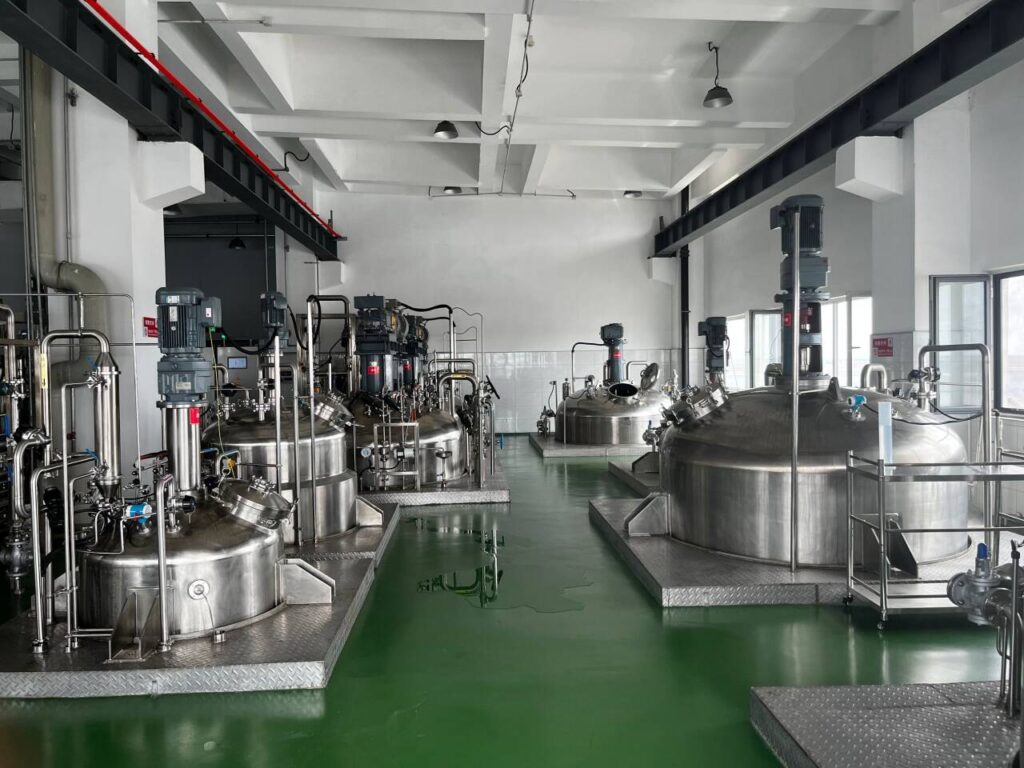
1、 Characteristics of Industrial Fermentation Process in Food Industry
The biggest difference between the industrial fermentation process in the food industry and other chemical industries is that it is a chemical reaction carried out by living organisms. Its main characteristics are as follows:
(1) The industrial fermentation process in the food industry is generally a biochemical reaction carried out at room temperature and pressure, which is safe and requires relatively simple conditions.
(2) The raw materials used in the industrial fermentation of the food industry are usually starch, molasses, or other agricultural and sideline products. As long as a small amount of organic and inorganic nitrogen sources are added, the reaction can be carried out. Microorganisms can selectively utilize the nutrients they need due to their different categories. Based on this characteristic, wastewater and waste can be used as raw materials for fermentation to transform biological resources.
(3) The industrial fermentation process is completed through the automatic regulation of organisms, with strong specificity of the reaction, thus obtaining relatively single metabolites.
(4) Due to the reaction mechanism inherent in living organisms, they can selectively and specifically carry out chemical transformation reactions such as oxidation and reduction of certain complex compounds at specific sites, and can also produce complex polymer compounds.
(5) It is crucial to prevent and control bacterial contamination during industrial fermentation processes. In addition to strict disinfection and air filtration of the equipment, the reaction must be carried out under sterile conditions. If contaminated with miscellaneous bacteria, production will suffer huge economic losses. If infected with bacteriophages, the harm caused to industrial fermentation will be greater, so maintaining sterile conditions is the key to successful industrial fermentation.
(6) Microbial strains are the fundamental factor in industrial fermentation. Through mutation and strain screening, high-yield and excellent strains can be obtained, and production equipment can be fully utilized. Therefore, products that are difficult to produce by conventional methods can be obtained.
(7) Compared with other industries, industrial fermentation requires less investment, yields quick results, and can achieve significant economic benefits. Based on the above characteristics, industrial fermentation is increasingly attracting people’s attention. Compared with traditional fermentation processes, modern industrial fermentation engineering has its own advantages in addition to the fermentation characteristics mentioned above. In addition to using microbial cells, animal and plant cells and enzymes can also be used, and artificially constructed “engineered bacteria” can be used for the reaction; The reaction equipment is not just a conventional fermentation tank, but is replaced by various bioreactors with high automation and continuity, which improves and innovates the fermentation level on the original basis.
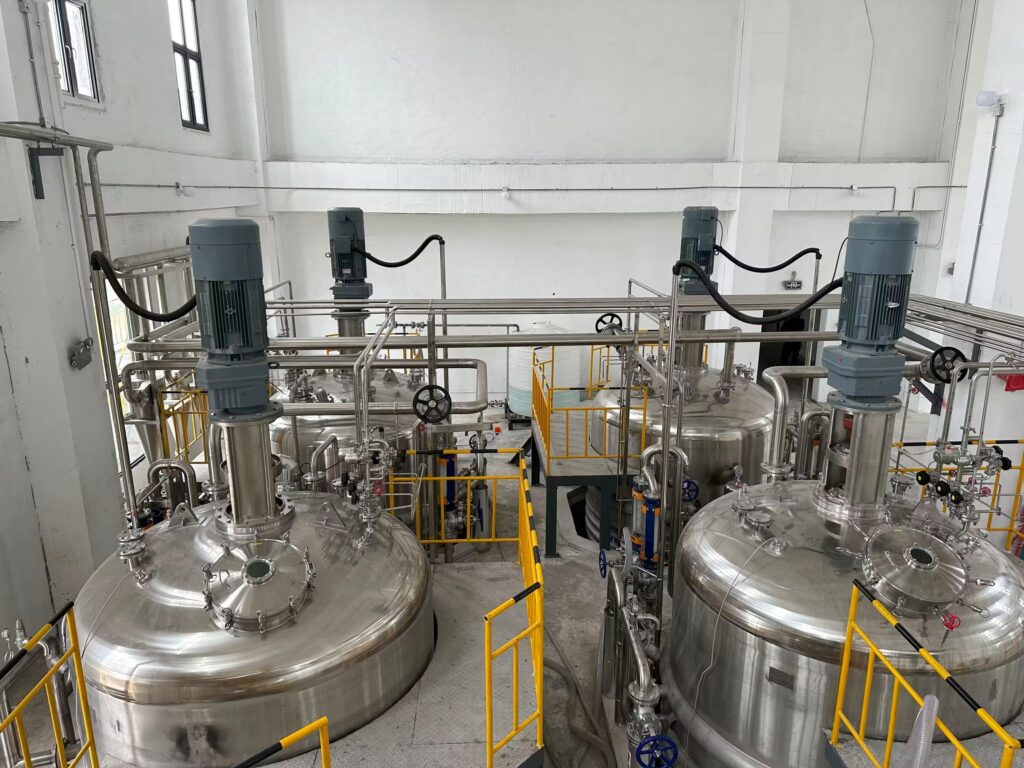
2、 The types of industrial fermentation can be divided into several types based on the characteristics of fermentation and the different oxygen requirements of microorganisms:
(1) According to the fermentation raw materials, it can be divided into types such as sugar fermentation, petroleum fermentation, and wastewater fermentation.
(2) According to the fermentation products, it can be divided into amino acid fermentation, organic acid fermentation, antibiotic fermentation, alcohol fermentation, vitamin fermentation, etc.
(3) According to the fermentation form, it can be divided into solid-state fermentation, semi-solid fermentation, and liquid fermentation.
(4) According to the fermentation process, it can be divided into batch fermentation, continuous fermentation, and flow addition fermentation.
(5) According to the different oxygen requirements during the fermentation process, it can be divided into anaerobic fermentation and ventilated fermentation.
(6) According to the fermentation of primary metabolites such as alcohol fermentation, amino acid fermentation, organic acid fermentation, and other secondary metabolites such as antibiotic fermentation and pigment fermentation.
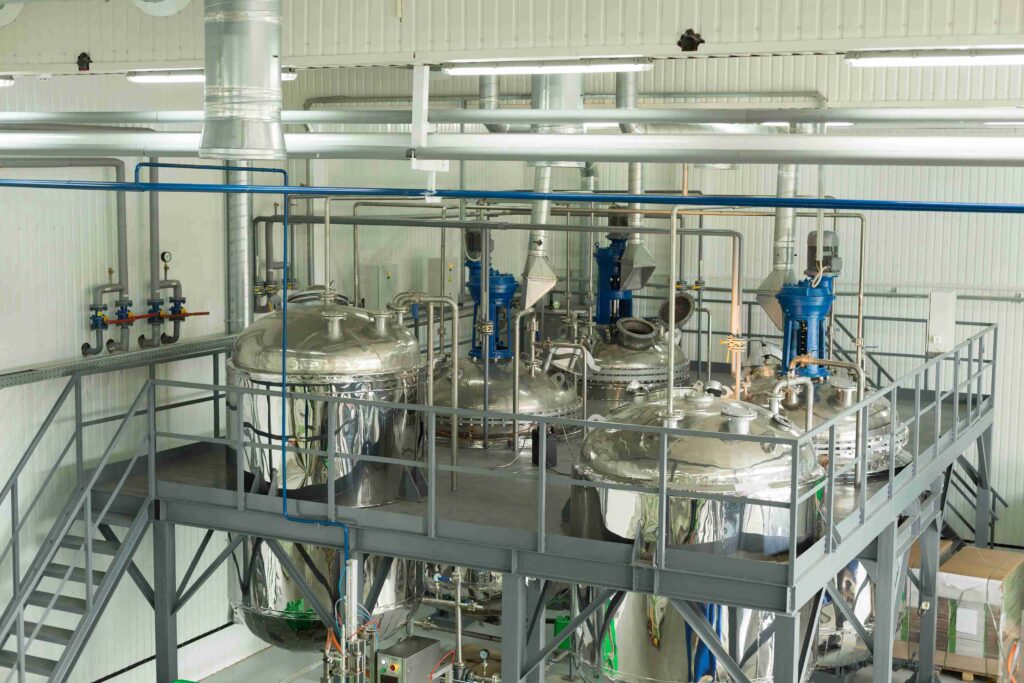
3、 For any type of fermentation (except for some transformation processes), a determined fermentation process consists of six parts:
①strain and determined seed culture medium and fermentation medium; ②Sterilization of culture media, fermentation tanks, and auxiliary equipment; ③Production of large-scale, active, purebred seed cultures; ④Large scale production of products under optimal growth conditions for microorganisms in fermentation tanks; ⑤Extraction and purification of products; ⑥Treatment of fermentation waste liquid.
Before establishing the industrial fermentation process, the strain must first be isolated and transformed to synthesize the target product, so that the resulting product meets industrial requirements and has economic value in terms of yield. Then determine the cultivation requirements of microorganisms and design corresponding equipment. At the same time, it is necessary to determine the separation and extraction method of the product. In addition, the entire research plan should also include continuous optimization of microbial strains, culture media, and extraction methods during the industrial fermentation process.
4、 Key technologies of industrial fermentation engineering
(1)Strain selection technology Strain selection is based on the theory of microbial genetic variation according to production requirements, using artificial methods to induce strain variation, and then using various screening methods to select target strains that meet the requirements.
The purpose of strain selection is to improve the basic characteristics of strains, in order to increase yield, improve quality, reduce costs, reform processes, facilitate management, and comprehensive utilization. The basic methods of strain breeding include natural breeding, phage resistance breeding, mutagenesis breeding, metabolic engineering breeding, gene targeted breeding, genome shuffling, and a series of other methods. In the early stages of industrial fermentationengineering and modern fermentation engineering, fermentation engineering mainly relied on wild microorganisms as the main fermenting agents.
In the modern fermentation stage, excellent strain selection methods are still an important link in the upstream engineering of industrial fermentationengineering. One is to use new screening mechanisms and screening identification indicators to continue obtaining excellent starting strains from nature; The second approach is to utilize genetic engineering and cell engineering techniques, combined with molecular biology methods, using principles such as metabolic engineering, metabolic regulation, genomics, and systems biology to reconstruct the required genetic engineering bacteria or genetically modify existing starting strains to obtain excellent strains capable of producing the desired fermentation products.
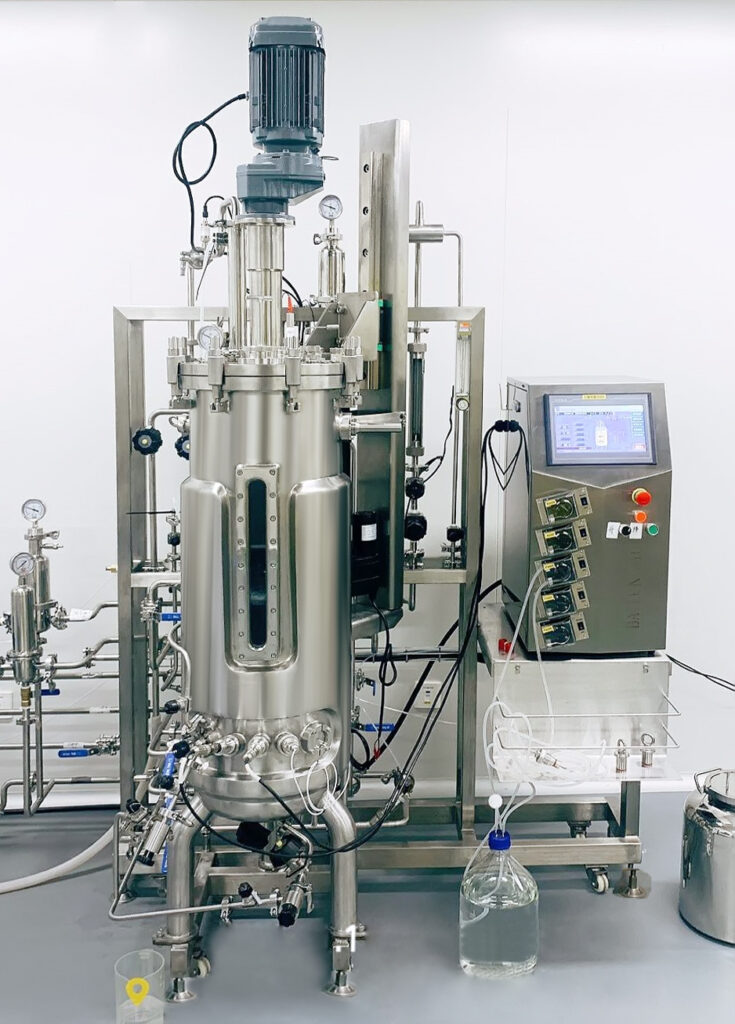
(2)Pure cultivation technology: Industrial fermentationgenerally uses specific microbial strains for purebred cultivation to achieve the goal of producing the required products. Therefore, the fermentation process should be carried out under conditions without bacterial contamination. Microbial aseptic cultivation is directly related to the success or failure of the production process.
If the aseptic problem is not solved well, it can lead to a reduction in the required quantity of products, a decrease in quality, and difficulties in post-processing; Heavy damage can cause the entire culture medium to deteriorate, resulting in the scrapping of tons of culture medium and causing serious economic losses, which is particularly prominent in large-scale production processes.
In order to ensure the normal operation of the cultivation process and prevent bacterial contamination, strict sterilization is required for the cultivation of most microorganisms, including laboratory operations and industrial fermentationproduction. The sterilization of the fermentation process involves the culture medium, fermentation equipment, and ventilation of the fermentation process.
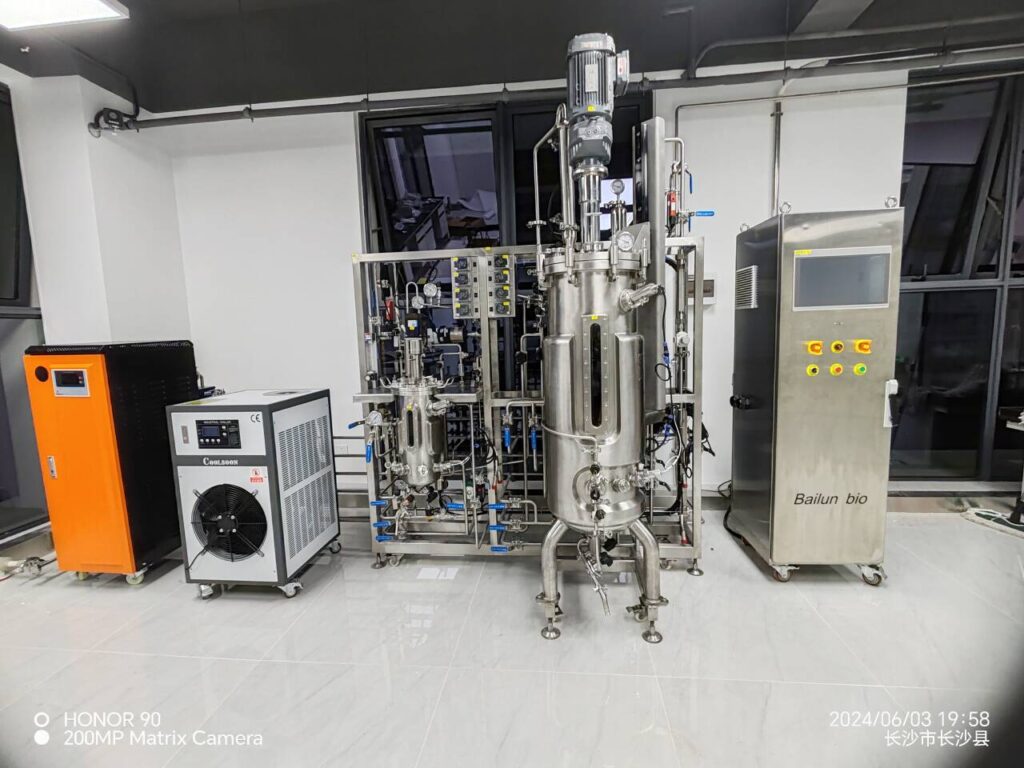
(3)Industrial fermentationprocess optimization technology Fermentation process optimization includes optimization from the microbial cell level to the macro microbial biochemical reaction level, simplifying the complex interactions between cell physiological regulation, cell environment, reactor characteristics, process operating conditions, and reactor control as much as possible, and optimizing these conditions and relationships to make them most suitable for specific fermentation processes as a systematic optimization method.
This optimization mainly involves four aspects of research content, the first of which is the study of cell growth process; The second is the stoichiometry of microbial reactions; The third is biological reaction kinetics; The fourth is bioreactor engineering.
(4)In order to achieve the goal of promoting and transitioning laboratory results to industrial scale, industrial fermentationprocess scaling up technology generally requires pilot scale process optimization research. In order to overcome difficulties, especially for some large-scale industrial fermentationproducts, a step-by-step scaling up method is adopted. The methods for amplifying industrial fermentation processes include: geometric similarity amplification of fermentation tanks, similarity amplification of oxygen supply capacity, similarity amplification of bacterial metabolism, similarity amplification of cultivation conditions, mathematical model simulation and prediction amplification, etc.
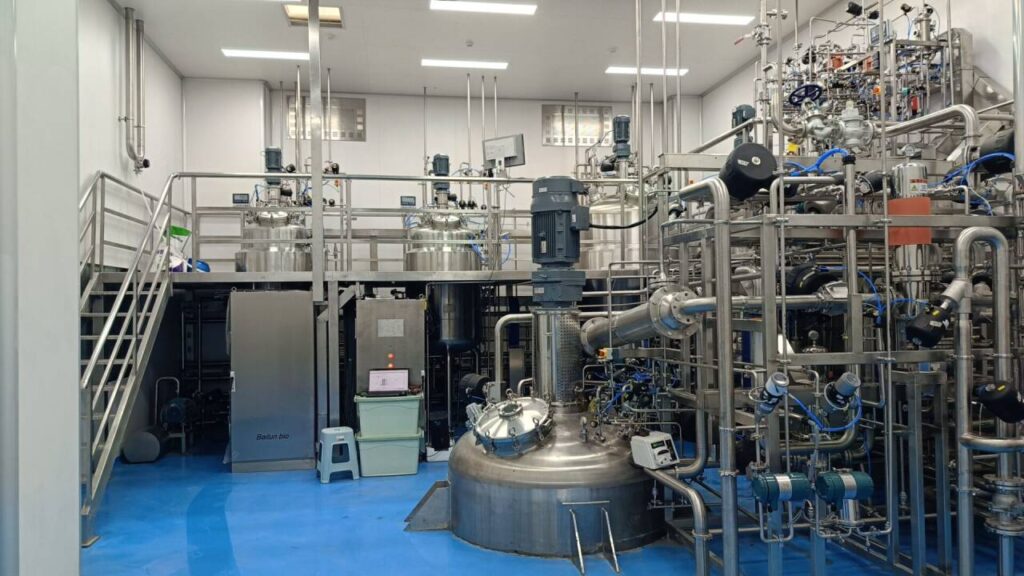
(5)Downstream separation and purification technology in industrial fermentationengineering refers to the process of extracting, concentrating, purifying, and refining the fermentation target product. The importance of separation and purification of industrial fermentationproducts is mainly reflected in the particularity, complexity, and strict requirements of biological products, which result in a large proportion of separation and purification costs in the overall production cost of fermentation products.
The downstream separation and purification process of industrial fermentation engineering usually accounts for 50% to 70% of the production cost, and some even up to 90%, which often becomes a limiting factor for implementing biochemical processes instead of chemical processes in production. Therefore, designing a reasonable extraction and refining process to improve product quality and reduce production costs is necessary to truly achieve commercial large-scale production of fermented products.
In a sense, the success or failure of industrial fermentation processes depends entirely on maintaining a growth controlled and production friendly environment. The most effective way to achieve this goal is to directly measure various parameter changes and regulate biological processes. Applying mathematics, principles of chemical engineering, electronic computer technology, and automatic control devices to the fermentation process, measuring biotechnology parameters, modeling and controlling biological processes, can efficiently control and manage industrial fermentation processes and improve production efficiency.
